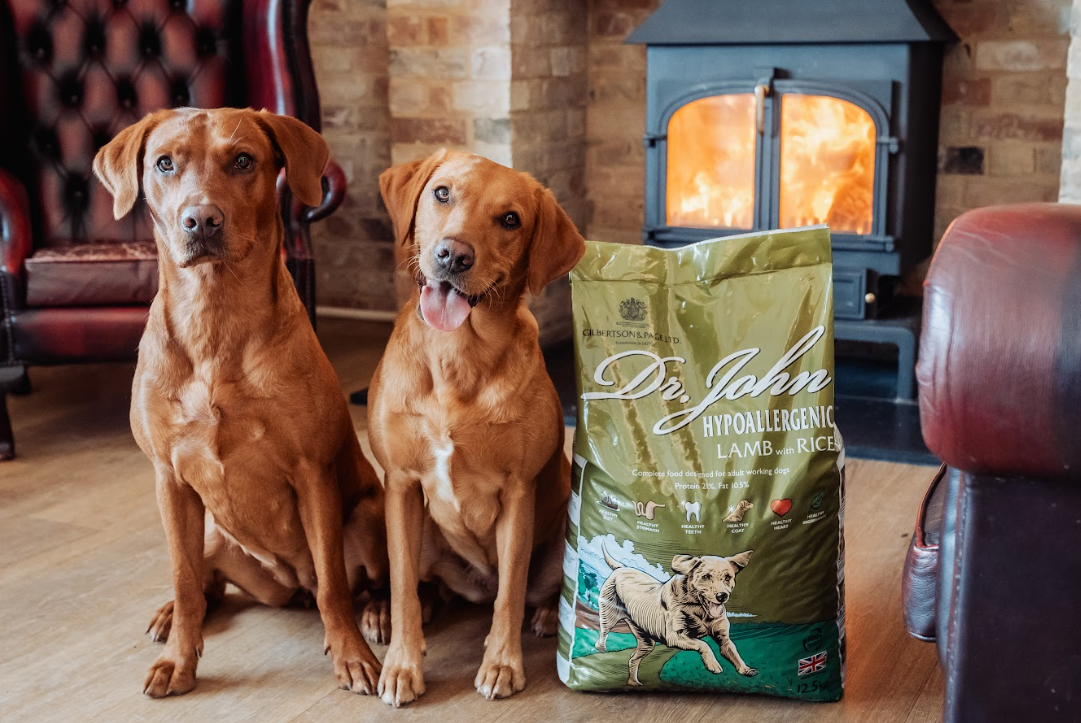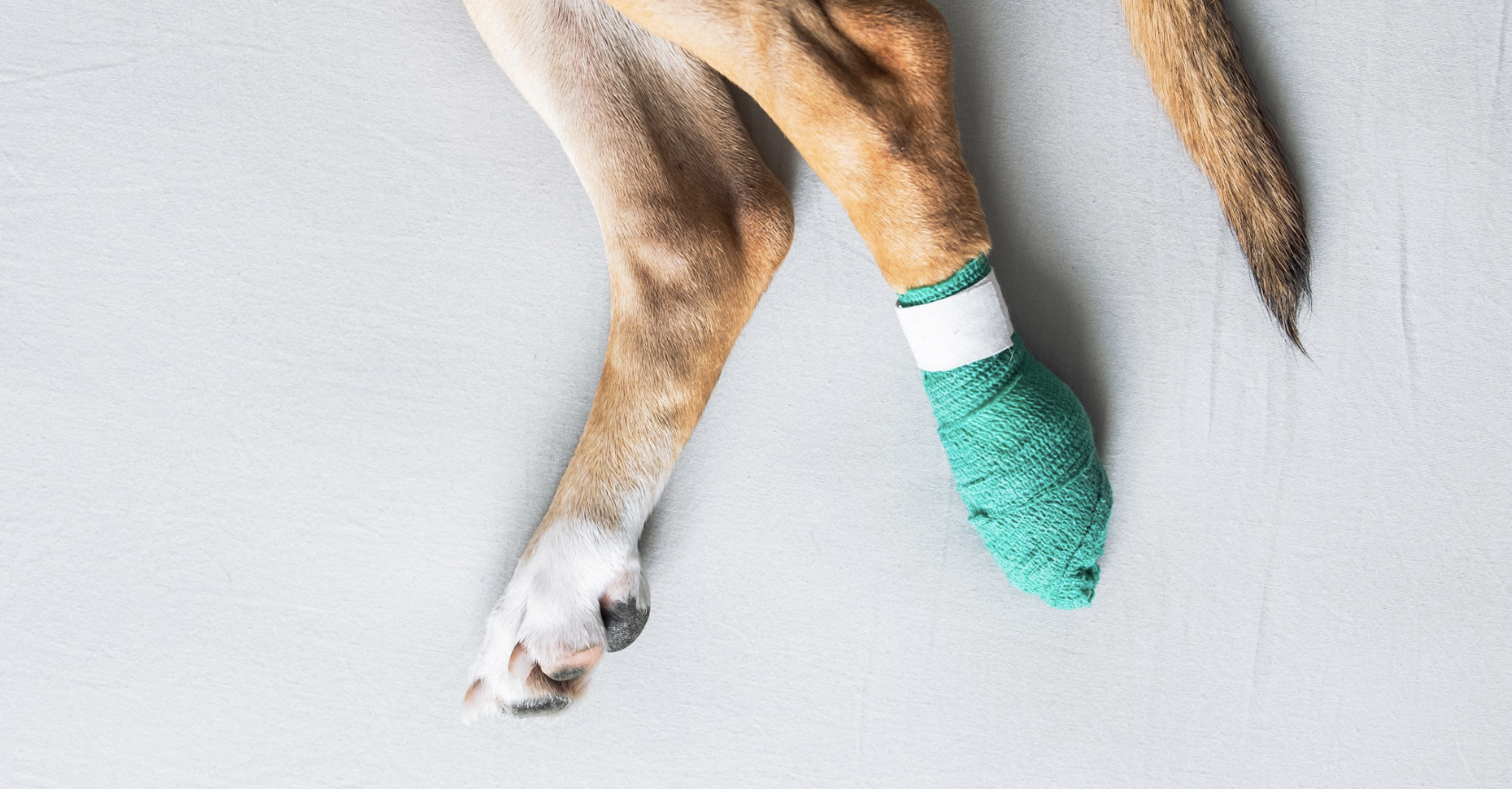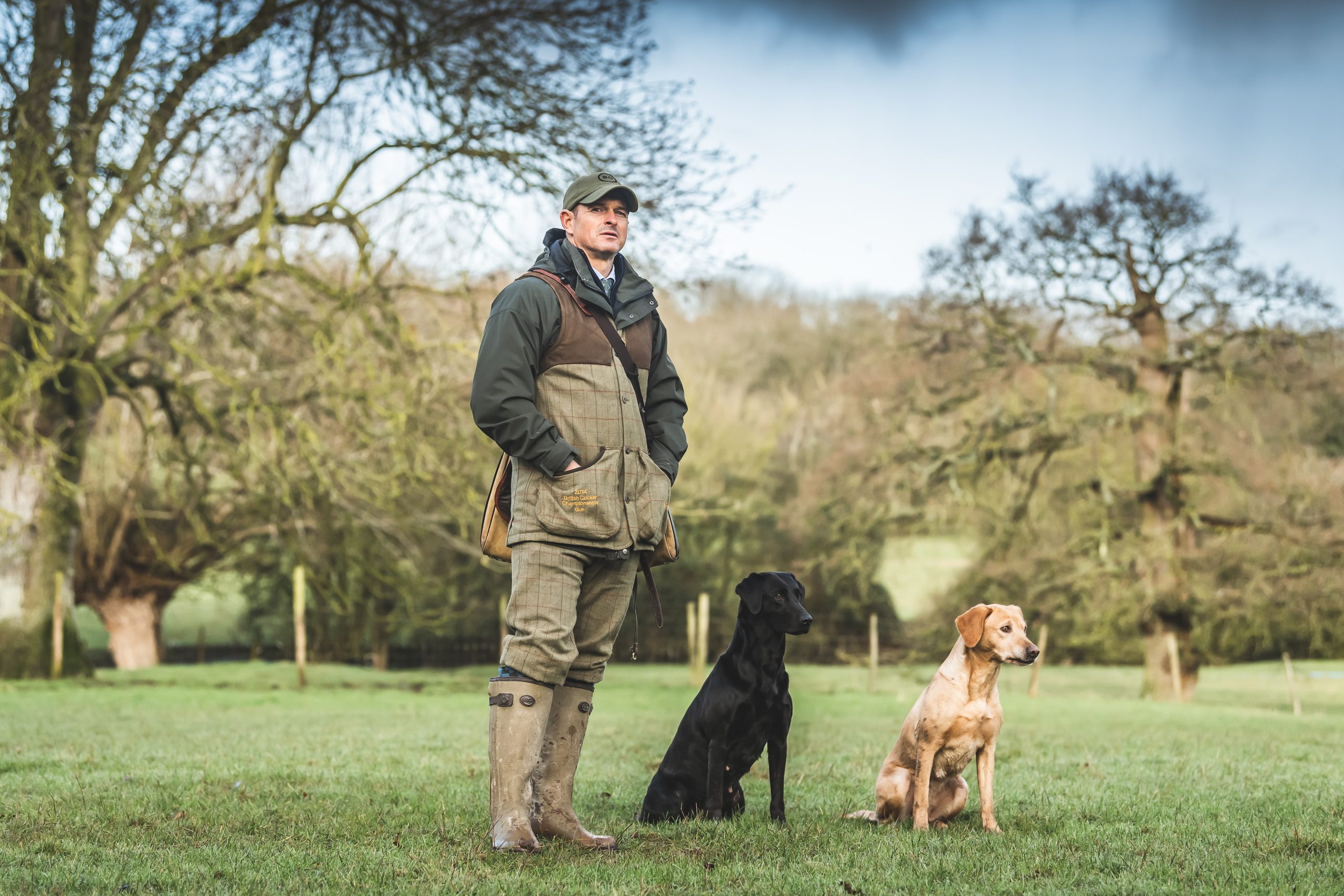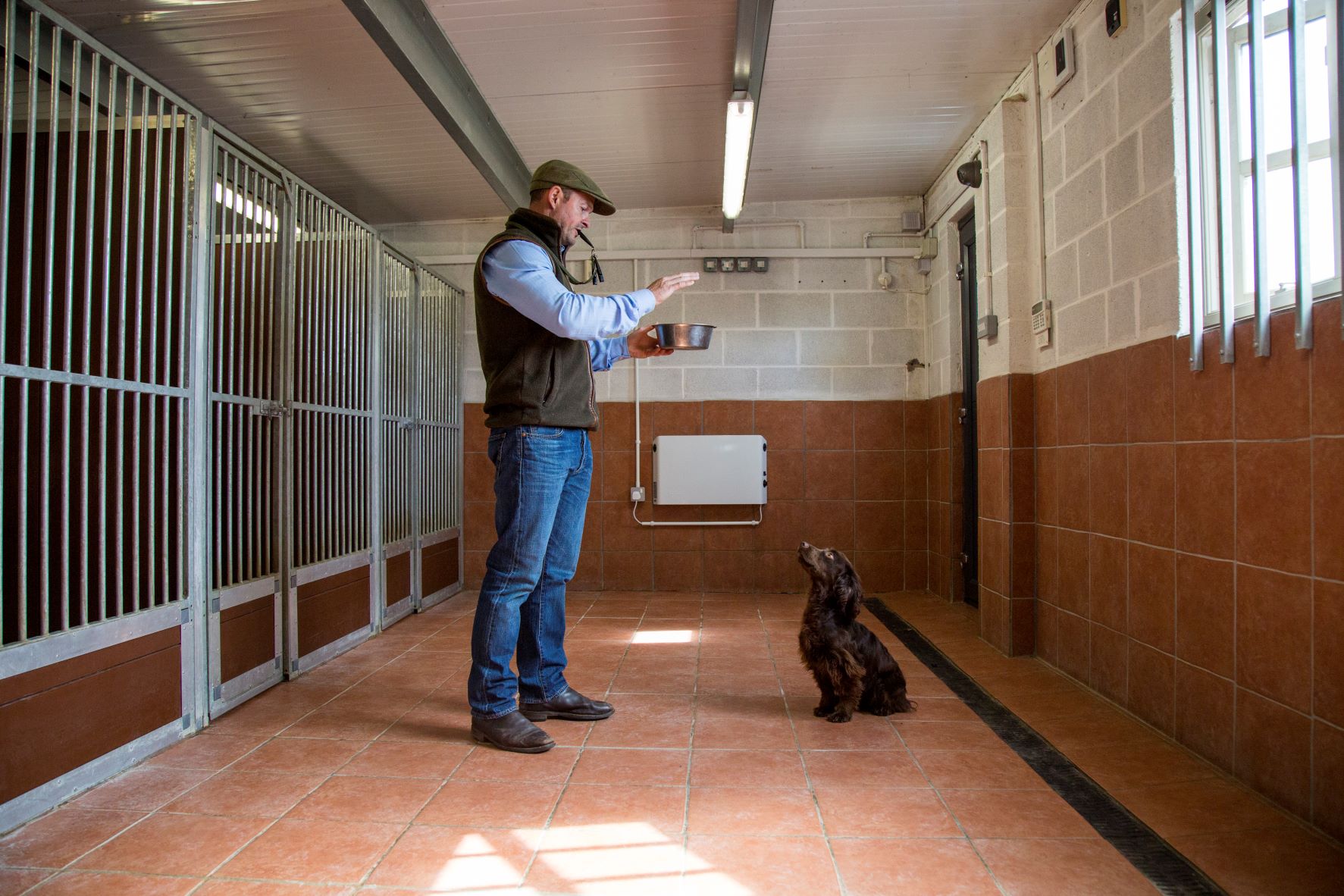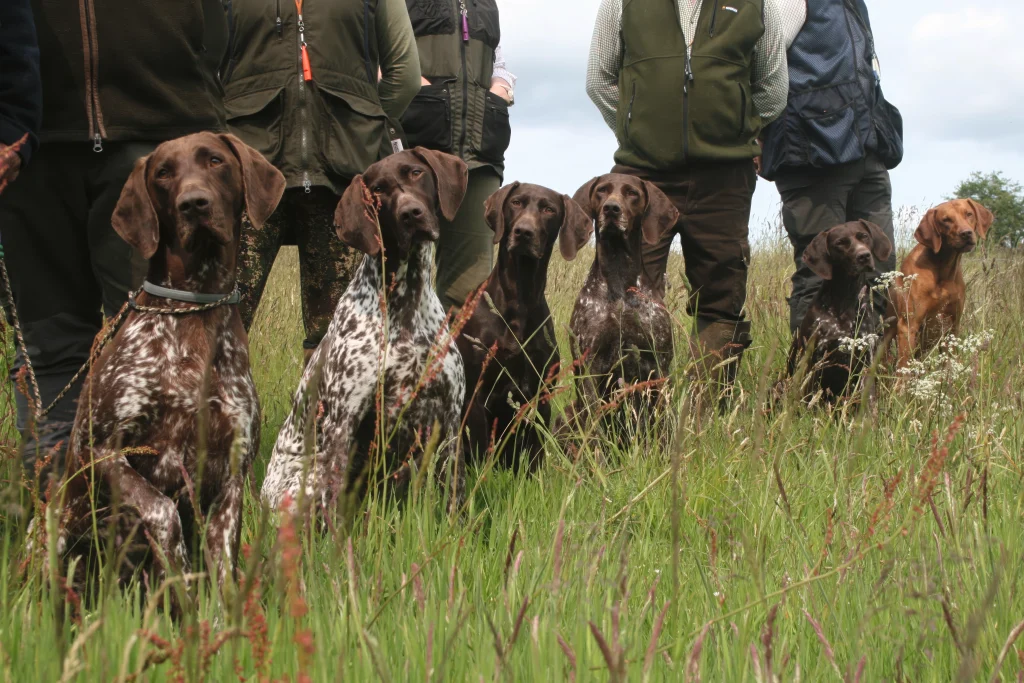Rock steady
Steadiness: the cornerstone of stress-free success with your gundog.
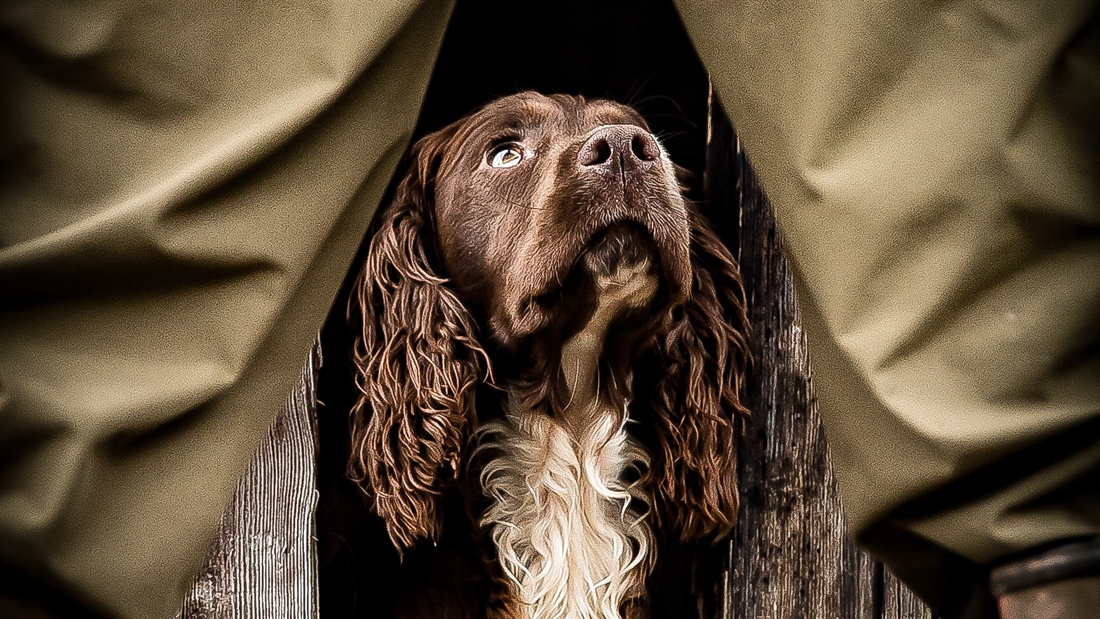
Whether you intend to work your dog in the beating line, picking-up team, as a peg dog, in trials, or a combination of disciplines, steadiness is the cornerstone of stress-free success. It weaves its way through almost every aspect of gundog training. Indeed, an unsteady dog can be extremely hard work and prove more of a hindrance than an asset.
A ‘steady’ gundog remains interested but composed, eager but under control. And it is the fundamental building blocks of this mentality that I will consider in this article, sharing a few exercises along the way that I hope will prove useful.
Early Days
Steadiness is a trait that can start to be embedded in a gundog from the first day you bring him or her home as a puppy. The key lies in developing this steadiness without the pup even knowing that it is being trained. Fun but calm sessions based around something the young dog enjoys are key.
Practising patience at meal times is a good place to start (see ‘Exercises’). Distances and durations can be increased gradually and scenarios can be varied as progress is made. Importantly, these fun exercises will help strengthen the bond between pup and owner.
Meal times aside, there are a number of everyday scenarios that offer the opportunity to teach a dog patience. Letting him/her out of the kennel, crate, or dog box, for example, is prime time for teaching a dog to wait until a command is given. Small lessons like this, taught frequently, encourage a dog to keep a close eye on you for instruction, too.
Once absolute steadiness has been established with food, the stop command can be introduced, and this basic level of steadiness can be transferred to simple retrieving exercises. It’s important to mix up what you do and keep the dog guessing.
The amount of steadiness work done with a young dog will vary. For a very driven dog with a natural instinct to retrieve, you may wish to do more steadiness work, making him or her wait before every retrieve, but too much early on with a dog that gets bored easily or does not show a lot of enthusiasm to retrieve, can dampen desire further. In this instance, I’d recommend building up confidence by doing just a couple of retrieves every other day in an area with no distractions, and allowing the pup to run straight out to pick up the object. Something that hits the floor and runs, like a tennis ball, can prove more appealing than a dummy and will also leave a small scent trail. Once he/she is doing this enthusiastically, then introduce the wait, closely monitoring levels of enthusiasm. And always end with the dog wanting more.
Exercises
Meal times
Patience work can be introduced as soon as the pup has been taught to sit for its food.
Place a hand on the pup’s chest and hold it back as you place the food bowl on the floor. Keep hold of the dog, repeat the sit command, wait for a brief moment, then give the ‘get out’ command as you point with an outstretched arm towards the food and release the dog. Gradually build on this over the coming days until you are able to take your hand away and he or she remains stationary. Increase the length of time you make the pup wait as you progress, and mix up sending the dog to its food with taking the food back to where he or she is sitting, or calling the dog to you, away from the food bowl.
General patience
Issue the ‘sit’ command to your dog before you open its dog box, kennel or crate door. Use a hand signal to emphasise the command if you wish. Open the door slowly and if the dog tries to jump out, calmly return him/her to the crate/box/kennel. Start with just a short wait before asking the dog to come to you, and build on this.
The stop command – stage 1
This can be introduced soon after the dog has learned to sit and wait before being sent to its food.
Stand between the dog and the bowl of food, issue the ‘get out’ command, and then ask the dog to ‘sit’ just before it reaches your position. Move into the dog’s space with your hand raised to reinforce the command. If the dog continues towards the food bowl, intercept it and take it back to where it was when you issued the ‘sit’ command. Only give the ‘get out’ command again when the dog sits promptly on command.
Intermediate
Once confident that a dog is completely steady during the above exercises, it is time to introduce a few distractions.
Start by visiting new environments. Up to this point, your training sessions might have taken place in just a couple of favoured areas, such as a training paddock or garden. New environments mean new smells, sounds and sights, and a young dog will be eager to investigate them. Go back to the very basics when training in a new environment, and progress steadily.
Gunshot, livestock, and dummies thrown by another person offer further examples of distractions which can be introduced gradually to basic sit and stay exercises. Of course, some of these elements, such as gunshot, will need to be introduced very gradually in their own right.
Other dogs can also be introduced to the equation. For this, I’d recommend using a well-behaved older dog that will not teach the younger dog any bad habits.
Don’t rush, but progress in tiny increments and keep exercises fresh, short and positive.
Exercises
Recall in company
This is a great exercise to keep your dog on its toes. Sit the dog up next to an older dog or dogs and walk away a few yards (you can increase this distance over time). Wait, and then call the older dog to you. If the young dog moves, take it back and try again. Every so often, call the younger dog first. This exercise works particularly well with a group of several dogs.
Hidden dummy throwers
Until this point, your young dog might have been making the odd retrieve. Not too much, but enough to build the basics. The dog will have grown used to watching you throw the dummy but how about if the dummy appears from elsewhere? Ask a training partner to stand out of sight (e.g. behind a hedgerow or a wall), and throw dummies around you and the dog. The unexpected thrown dummies will test the dog’s steadiness and ability to remain sitting, whilst developing marking skills.
Livestock
I like to introduce my dogs to livestock when they are still puppies. Speak to a local farmer and explain what you’d like to achieve. Start with chickens, with the dog on a lead. Walk calmly amongst them and if the dog pulls towards them, give the lead a sharp check and firmly say ‘leave’. Keep sessions short and ask the dog to sit every so often, making it wait for a few seconds each time before continuing to walk. Repeat the process with other livestock once the dog takes little notice of them.
The stop command – stage 2
You will have built upon the very basics of teaching the stop command to now include stopping the dog further away (i.e. placing the food bowl further from your position), recalling after the stop whistle instead of issuing the ‘get out’ command and mixing up the spoken command with a single long blast of the whistle. The next stage is to practise the command in the absence of food, when the dog is not expecting it. Remember, consistency is key; if the dog does not respond to the command, you must take the dog back to its exact position when the command was issued, re-issue the command, and ensure it is followed.
Advanced
Now for the exciting part – live game. But remember, it’s naturally much more exciting for your dog, too.
On introducing a dog to live game, it will become apparent quite quickly if certain aspects of his/her previous training are not up to scratch. Food, dummies and other dogs are one thing, but moving game is another altogether. As soon as an issue is identified, it must be addressed, even if that means skipping back a few stages in training.
Here we must start very slowly and monitor the dog’s excitement levels closely. Lessons in steadiness should always be conducted in a calm and composed manner – it is essential to be in the right frame of mind before any training sessions commence.
At this stage, many will the seek the help of a professional gundog trainer; not only will they have the facilities required, but they will be able to spot any issues very quickly.
Exercises
Watch and wait
Some professional dog trainers have live game pens. Alternatively, you can contact your local gamekeeper and ask if you can accompany him/her whilst they are feeding poults in and around release pens in the summer.
The idea here is to sit your dog up quietly and calmly and ensure it stays in that position whilst a few poults are walked past it. Put your dog on a lead to start with and find a position where a few poults – not many – can be funnelled past you and the dog.
If the dog pulls towards the birds, check the lead firmly and say ‘leave’. Practise this in short sessions until the dog is sitting calmly and watching the poults walk past. Then progress to walking to heel amongst the poults, stopping and sitting every so often.
The next step is removing the lead. Start with simple sit and wait exercises before walking the dog off the lead but to heel.
On the peg
Peg days offer a unique opportunity to practise steadiness as they are run primarily with gundog training in mind. Run as a mini-driven day, handlers are able to stand back behind the line or next to the Guns, and experience a dose of the excitement that would be encountered on a typical driven day. There will often already be a dedicated team of pickers-up, so there is no pressure on students to pick the birds, but they will have the opportunity to work through exercises at their own pace.
Maintenance
After a full season’s work beating, shooting or picking-up, you may find your dog’s steadiness is starting to slip. Your dog might, for example, have started to creep from the sitting position, or have become sloppy on the stop whistle.
It might be that the dog has become overly confident and has started anticipating your next move or instruction before a command has been issued. This is quite common and one of the reasons why it is so important to address the issues identified when back in the training field, where there is the time to do so in a calm and unhurried manner.
I often advise my gundog training clients to ‘train, train, train, work’, or ‘train, train, train, trial’ their dogs to help maintain the steadiness they have already established. This really is key – you should never rest on your laurels with gundogs. And remember, rarely is there no room for improvement.
Related Articles
Get the latest news delivered direct to your door
Subscribe to Gundog Journal
Unlock the full potential of your working dog with a subscription to Gundog Journal, the UK’s only dedicated magazine for gundog enthusiasts. Published bi-monthly, this authoritative resource delivers expert training advice, in-depth interviews with top trainers and veterinary guidance to help you nurture a stronger bond with your dog.
With stunning photography and thought-provoking content, Gundog Journal is your essential guide to understanding, training and celebrating your working dog.
Save 10% on shop price when you subscribe, with a choice of packages that work for you. Choose from Print & Digital or Digital only with each journal delivered directly to your door or via the app every other month, plus access to past issues with the digital back issue library.



